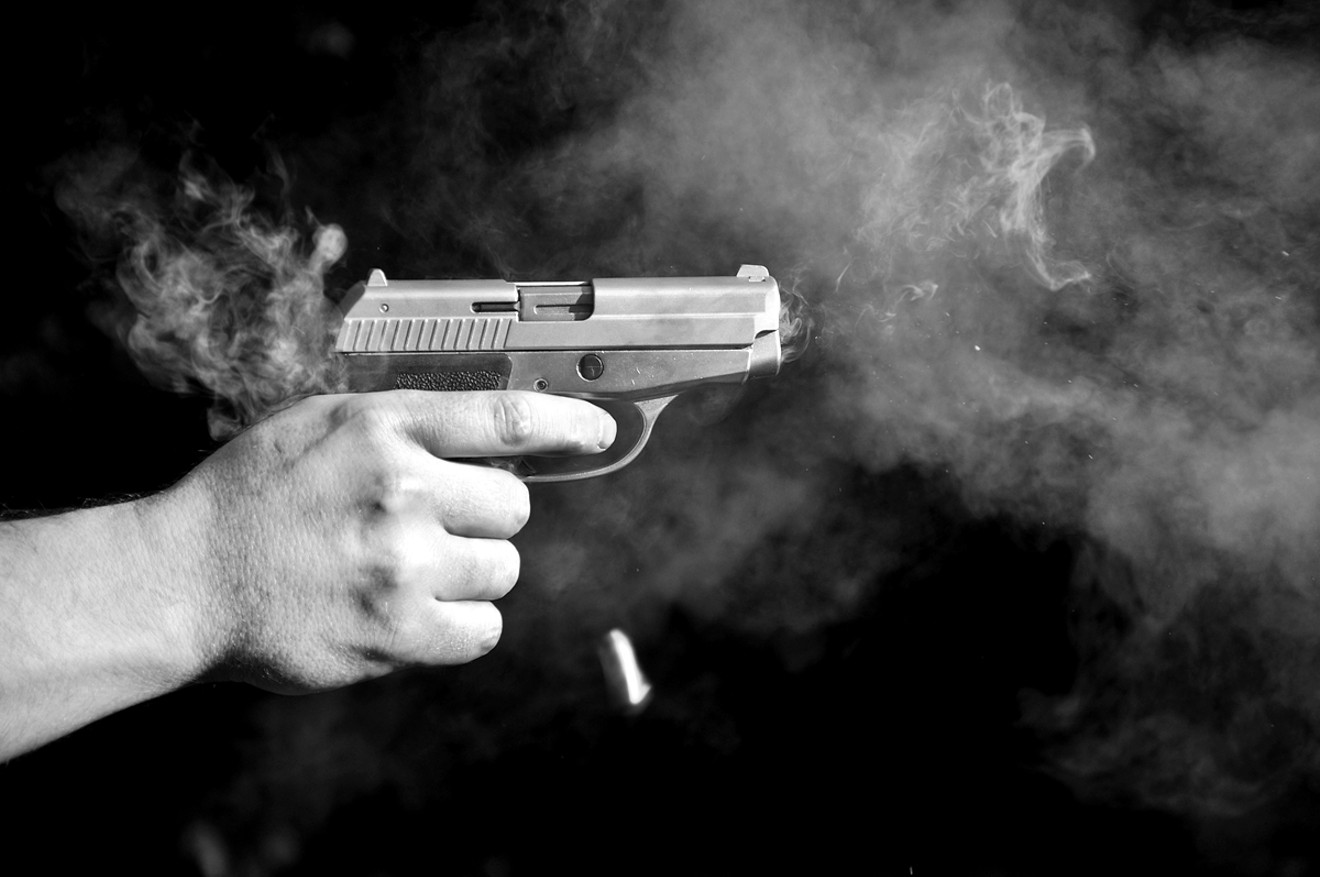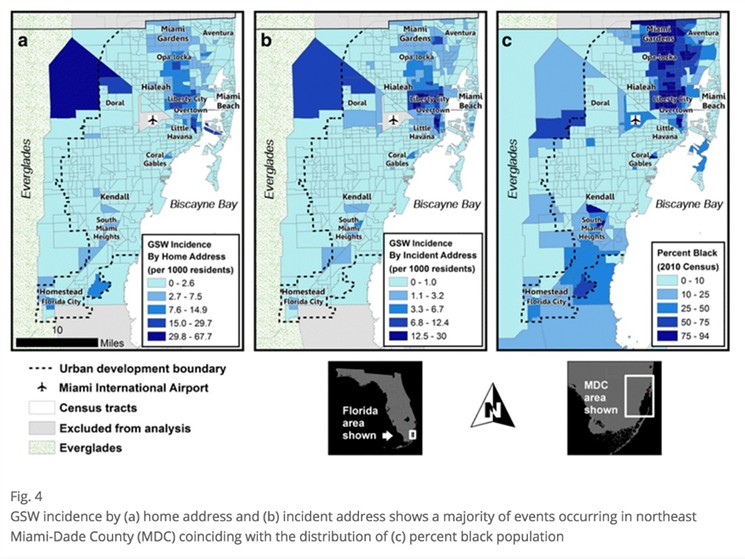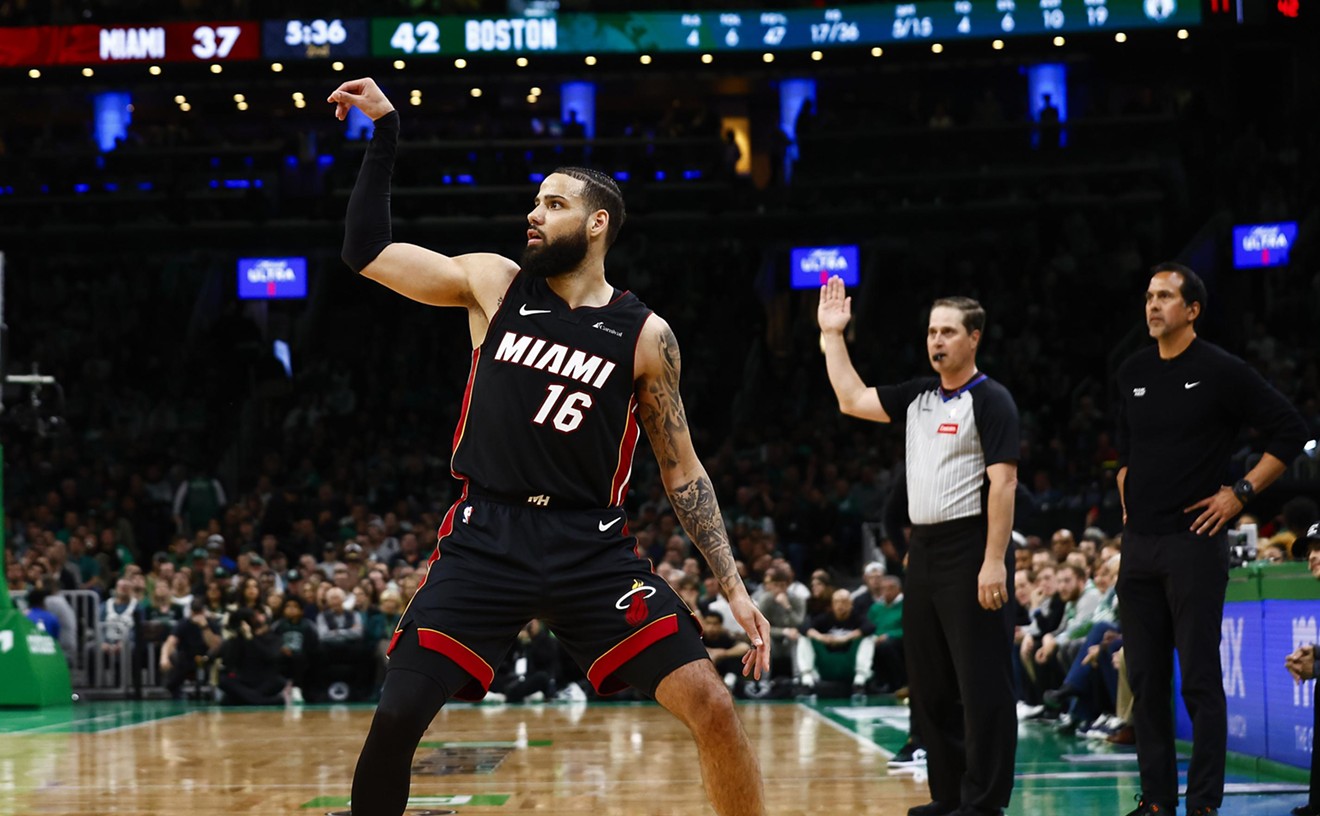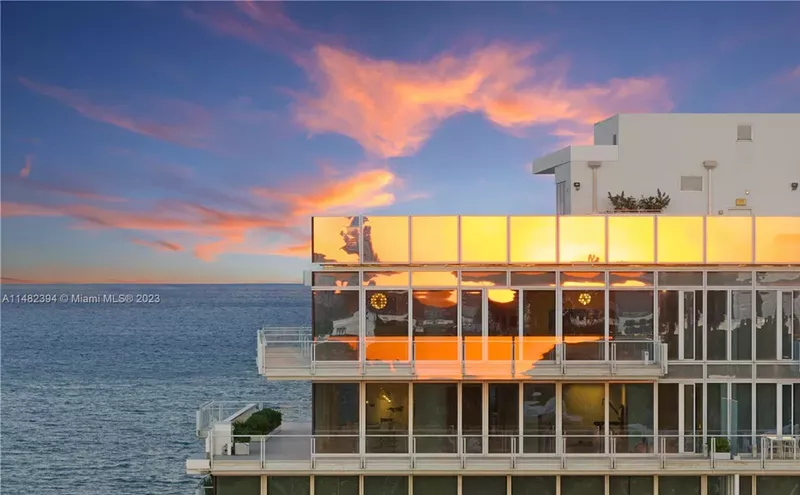Florida's gun control debates tend to go like this: NRA-backed GOP politicians propose rules to allow more guns in more places and to decrease accountability for how those guns are used. Opponents bring up actual evidence, like the fact that homicides have surged after Stand Your Ground was passed. And then legislators usually pass their NRA-pandering rules anyway.
Lost in all that depressingly predictable argument, though, is a salient question: Who is actually suffering from gun violence in Florida? In Miami, there's now a clear answer thanks to a study that crunched more than a decade's worth of data on gunshot victims at Jackson Memorial Hospital.
The authors of the study, which was first reported on by WLRN, found that young black men are far more likely to be shot in Miami-Dade County than anyone else. In fact, more than 70 percent of gunshot victims are black, despite the fact that African-Americans make up just 19 percent of Miami's population.
"Our findings suggest that there are clear racial, economic, and geographic disparities in firearm violence," the authors write in the study, which was published by BMC Public Health in February. "Our study population was disproportionately comprised of young, black males relative to the (Miami) population. Black patients presented at the trauma center at a much younger average age than white and Latin patients, and were more likely to present with multiple (gun shot wounds) compared to white patients."
The study is drawn from an impressively deep batch of data. The three authors from the University of Miami School of Medicine looked at 4,547 patients who arrived at Jackson's trauma unit between 2002 and 2012 with intentionally fired gunshot wounds. (Since Jackson is the county's only trauma unit for gunshot victims, the data represents a Dade-wide sample of gun violence victims).
The researchers were able to map the race and age of each of those victims, and the results were stark. They found that 71.8 percent were black, compared to 14.1 percent Latino and just 11.8 percent white. A full 91.2 percent of the victims were male, and the average age was about 29 years old.
Interestingly, researchers were also able to pin down where the victims lived and where they were shot with some accuracy. They found home addresses for 86 percent of the victims and in 61 percent of the cases, they were able to determine where they were shot.
The vast majority of victims live and were shot in mostly black neighborhoods, researchers found, including Liberty City, Opa-locka, and Overtown:
The researchers also considered how gun violence changed over the 11-year period studied. They found that violence was statistically increasing and that gunshot victims were becoming younger, but that geographically, the shootings showed virtually no change. In other words, ever younger black men were being shot at a greater frequency, but all that violence stayed in mostly black neighborhoods.
Why is this the case? The researchers point to Miami's long history of segregation and economic neglect for black communities.
"It is important to recognize that the increase in firearm injury over the eleven-year study period mirrors poverty and inequality rates over time, which disproportionately affects black communities and differential access to economic resources that perpetuate violence," they write. "These disparities within MDC are driven by a history of urban planning and divestment that caused the creation of black, urban ghettos and disenfranchised communities in the neighborhoods of Liberty City and Overtown."
Studies like this are all too rare, in no small part because the GOP has banned federal funding for research into gun violence.
Understanding who is actually killed by the guns proliferating across Florida — namely, young, poor black men in urban neighborhoods — is an obvious first step toward sane laws about guns.
[
{
"name": "Air - MediumRectangle - Inline Content - Mobile Display Size",
"component": "19274298",
"insertPoint": "2",
"requiredCountToDisplay": "2"
},{
"name": "Editor Picks",
"component": "17482312",
"insertPoint": "4",
"requiredCountToDisplay": "1"
},{
"name": "Inline Links",
"component": "18711090",
"insertPoint": "8th",
"startingPoint": 8,
"requiredCountToDisplay": "7",
"maxInsertions": 25
},{
"name": "Air - MediumRectangle - Combo - Inline Content",
"component": "17482310",
"insertPoint": "8th",
"startingPoint": 8,
"requiredCountToDisplay": "7",
"maxInsertions": 25
},{
"name": "Inline Links",
"component": "18711090",
"insertPoint": "8th",
"startingPoint": 12,
"requiredCountToDisplay": "11",
"maxInsertions": 25
},{
"name": "Air - Leaderboard Tower - Combo - Inline Content",
"component": "17482313",
"insertPoint": "8th",
"startingPoint": 12,
"requiredCountToDisplay": "11",
"maxInsertions": 25
}
]













